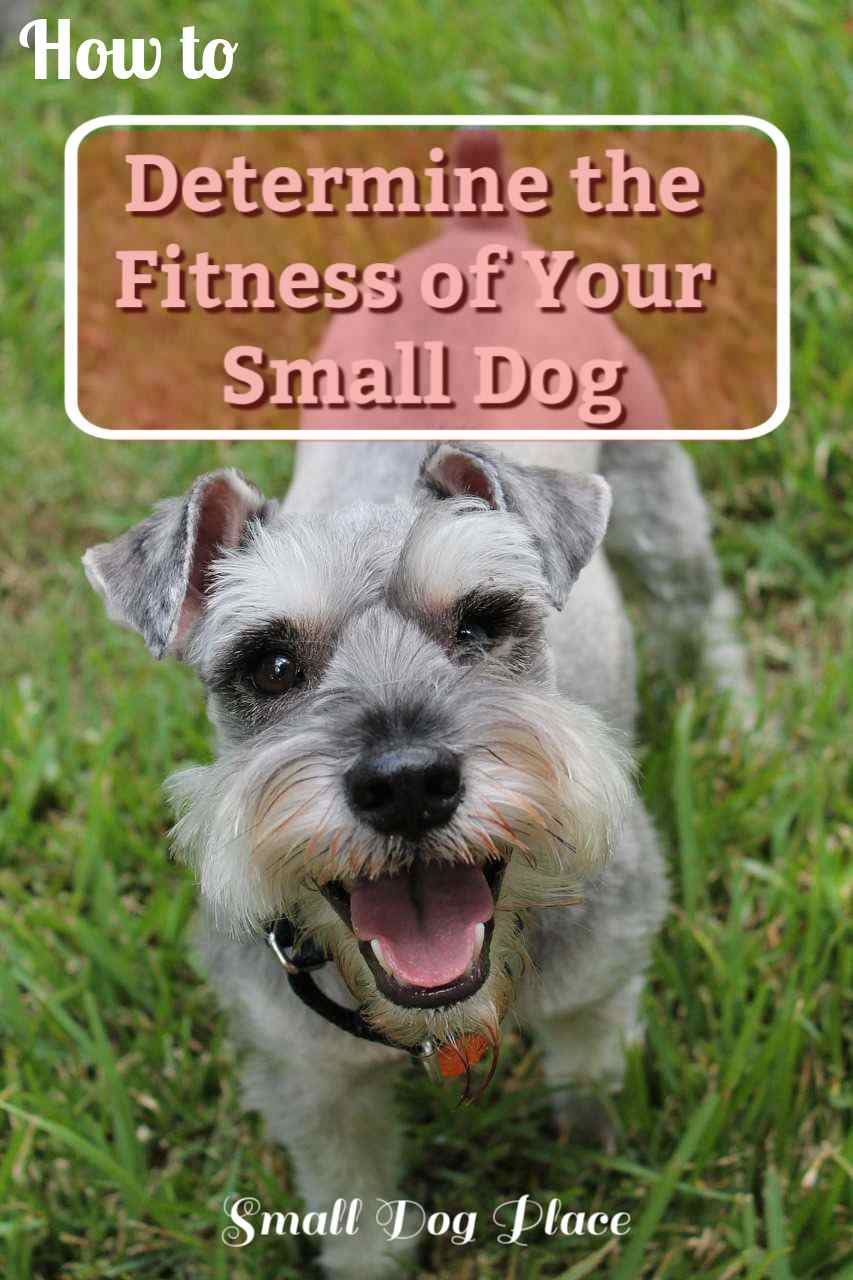- Small Dog Place Home
- Health
- Dog Fittness
Dog Fitness: How to Determine the Fitness of Your Small Dog?
Dog Fitness By Stella Lincoln |Last Updated 12-19-2022
A Dog is man’s best friend. Whether you have one of the fluffy small breed dogs or one of the rare dog breeds, every dog owner takes pride in taking care of their dog. There are so many different dog breeds out there.
Certain health conditions can go undetected in a dog. This can become a significant problem for the dog’s and in some cases, the owner’s health, if detected later on.
The problem is compounded because small dogs may be more aggressive than larger dogs. This erratic behavior can make it hard to determine what is irregular conduct for a particular breed dog.
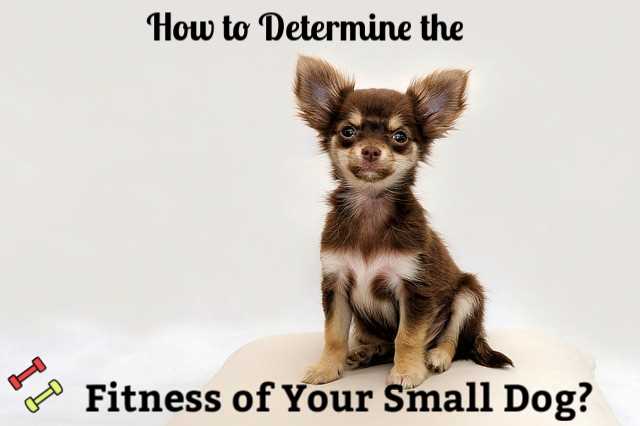 Eight Ways to Determine Dog Fitness
Eight Ways to Determine Dog FitnessTherefore, it is good to check the points below that helps to determine dog fitness.
1. Monitor Your Dog's Sleep Patterns
2. Explore Your Dog's Feeding Habits
3. Observe How Well Your Dog is Fitting Into a New Home
4. Recognize changes in urine or feces markings
5. Check your dog's skin and hair coat
6. Examine your dog's teeth, mouth and gums
7. Inspect your dog's paws and claws
8. Study your dog's daily exercise patterns
Dog Fitness and Sleep Patterns
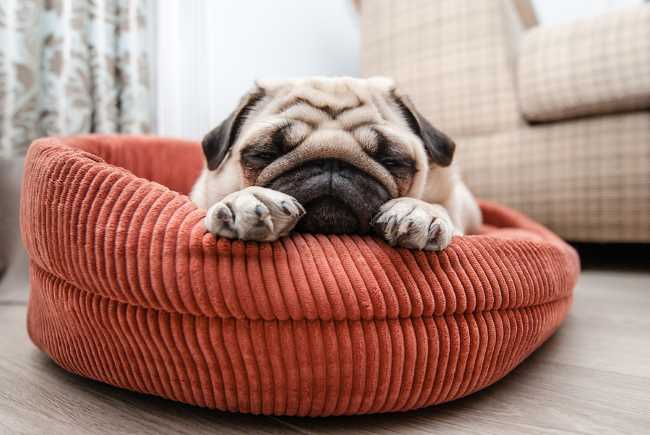
Monitor your dog's sleep patterns.
Domesticated animals like to sleep just as much like wild animals. There are several different factors which can influence the amount of sleep a dog needs. Before we go on to talk about the complications that a dog can have in their sleep, let’s look at the standard sleep patterns.
Newborn puppies up to the age of 12 weeks need to sleep anywhere from 18 to 20 hours every day. Some puppies will even sleep up to 22 hours a day. They get up only to wean off of their mother. Adult dogs, below the age of seven, and in some breeds ten years of age, need to sleep anywhere from 12 to 14 hours every day according to the American Kennel Club.
Dogs older than seven years of age will sleep more than adults. Seniors tend to take more naps than their younger counterparts. A dog's’ sleeping position and habits tell you a lot about their personality and health. Larger dogs sleep more than small dogs.
Your dog might have problems getting enough sleep if they are in a new environment. Give your dog time to adjust to the new surroundings.
Getting accustomed to the new locale can take anywhere from 5 days to 2 weeks. Have a consistent nighttime routine and bedtime. This will make it easier to identify deviations from the routine if they do occur.
Dog Fitness and Eating Habits
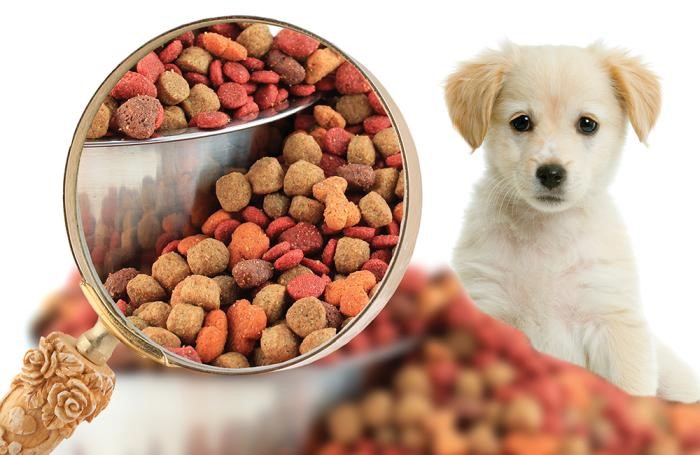
Examine Your Dog's Feeding Habits.
When to feed your small dog? How often to feed a little dog? How much food a small dog needs? What are the pros and cons of grain-free dog food? New small dog owners have all these questions.
The first thing to determine a healthy feeding habit for your dog is age. Small dogs reach their full height, weight, and size by the time they are 10 to 12 months of age. Dog breeds weighing up to 30 pounds when fully mature, fall into the category of small dogs.
Feed puppies at least three and in some cases four times a day until they reach the age of six months. Before you choose the best dog food, check if your dog is overweight.
Your dog should be getting a complete, well-balanced diet. Avoid feeding your dog scraps from the dinner table. Onions and chocolates are poisonous for dogs and foods your dog should never eat.
Your dog will be an energetic dog, with a fit appearance, and a beautiful glossy coat if the food coincides with your dog’s needs. If your dog passes bowel movements more often, your dog is having issues digesting the food. Dogs must get the right amount of exercise as well as having a well-balanced diet.
Dog Fitness and Relocation
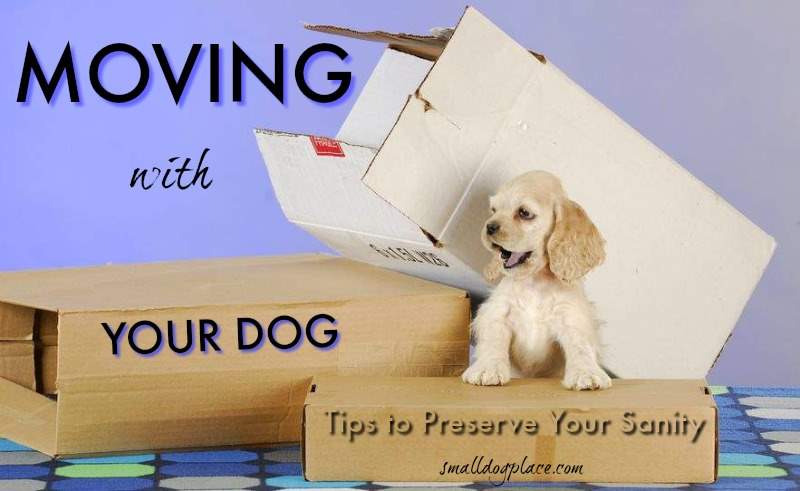
Observe How Well Your Dog is Fitting Into a New Home.
Moving can be just as a complicated process for animals as it is for humans. The home is a safe place for your dog and associated with feelings of security, shelter, and protection. Moving from one home to another can lead to the dog, acting out “puppy behavior.”
The dog can have anxiety problems because of the apprehension of being in a new place. Behavior such as overactive chewing is a way for the dog to deal with the anxiety of moving to a new home. The Bichon Frise is a breed of a small dog which is especially prone to feeling separation anxiety.
One of the best ways to calm your dog is to maintain the old routine. There will be a lot much more activity in the new surroundings. These actions can make your dog even more anxious. If you took your dog for a walk just before sunset every day, try to imitate the same old routine in the new setting.
Try to bring your dog’s belongings from the old house to the new home. Dogs are incredibly location conscious creatures. The smell from their old appurtenances helps to calm their nerves. Try not to leave your dog alone for the first two weeks after the move.
If you do leave your dog alone, strategically place treats for your dog. Your dog will begin to associate the new place as a welcome move instead of associating it with negative energy.
Urine Marking and Dog Fitness
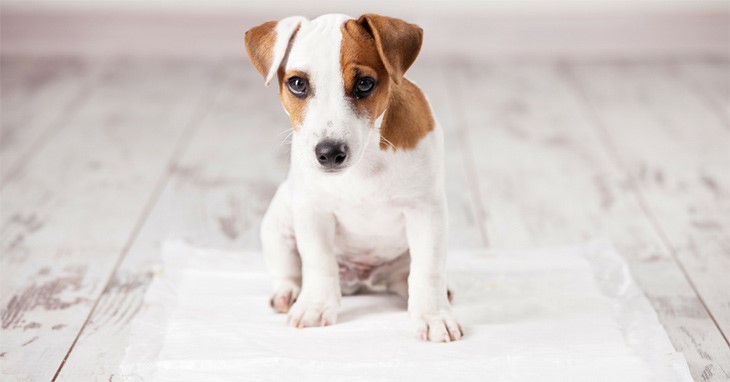
Recognize changes in urine or feces markings.
Why do housebroken dogs begin to mark their territory indoors? A dog marks its boundary by using urine, or sometimes feces. Dogs that are not spayed or neutered are more likely to display this sort of behavior. However, sometimes spayed and neutered dogs also exhibit this behavior.
If this is new behavior for a dog, it could be a urinary tract infection (UTI). A dog with a UTI licks their genital area more often. Another possibility is that the dog is taking medication, which is causing frequent uncontrolled urination. The frequent urination could also be caused by incontinence.
Male dogs that are not spayed or neutered are more likely to mark their territory. A dog marking its territory is a sign that there has been a change to their environment or people they interact with daily. There might be a new dog across the street or a new dog on your walk.
To prevent your dog from urinating all over the place, shorten your dog’s leash. Your dog is not allowed to pee all over the home is the message you send by reducing the strap. Take the dog out for a walk more often. Stop during the trail, with your feet placed firmly on the ground, say “potty now!”
Your dog may not do comply the first time you do this. You need to repeat this gesture until your dog does finally obey. At home, you need to use an excellent odor eliminator, which will also act as a marking deterrent.
Dog Fitness and Healthy Skin

Check your dog's skin and hair coat.
The indication of a healthy dog is its skin and coat. A dog’s skin and coat show signs of illnesses before any other part of the body. You can use the help of the King Essay, an academic assistance provider, to investigate all the different types of dog breeds.
A dog’s skin and pelage need to be smooth, clean, and shiny without producing an obnoxious smell. The dog’s skin also needs to be cleaned from fleas, ticks, mites, and lice. The dog’s skin needs to be firm and not floppy or limp. As the animal ages, the coat might become slightly drooping.
Place your hand over the dog’s right shoulder and slowly feel its right side. Move your hand from the right shoulder to the right hind leg. Look for any hotspots, swelling, or inflammation. Anything faulty on this side could indicate a problem with the dog’s small intestines.
Perform the same examination on the left side of the dog. Anything inconsistent on this side of the body could indicate a problem with the dog’s colon. Check the entire coat of the dog to make sure that it has consistent hydration. Lift the skin behind the nape of the neck and release. It should bounce right back. The skin of a healthy dog should not be tensed up anywhere across the body.
Dog Fitness and Healthy Teeth
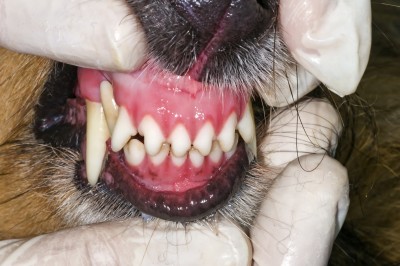
Examine your dog's teeth, mouth and gums.
From birth to a period of two weeks, most dogs do not have any teeth. From the age of two to four weeks, incisors begin to emerge, accompanied by premolars, molars, and canines. From the age of five weeks to six weeks, all 28 baby teeth are there.
A dog’s milk teeth will begin to fall from the twelfth week to seven months of age. By the time a puppy is eight months old, it should have all 42 of its adult teeth in place. Once all of a dog’s adult teeth are in place, there should be no reason for a dog to have bad breath.
A dog with bad breath or halitosis is the medical term, is an indication that your dog has periodontal disease. This is one of the reasons to regularly brush your dog’s teeth. Do not use regular human toothpaste as the fluoride is poisonous for your dog. Purchase toothpaste specially designed for dogs.
Be ready to brush your dog’s teeth once every two to three days. The toothbrush will be softer than a human toothbrush, and some can be worn over the fingers. Before using a toothbrush, massage your dog’s teeth to get them used to the idea of getting their teeth brushed.
Wellness and Your Dog's Paws
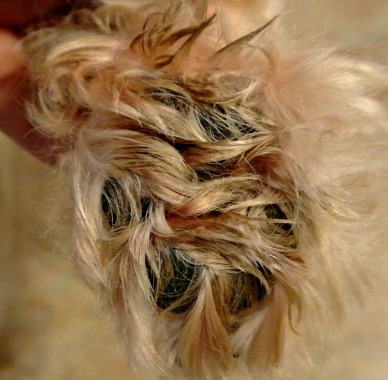
Inspect your dog's paws and claws.
A dog could have fitness problems with their paws and claws if you can visibly notice your dog limping or licking, gnawing on their feet. Pityrosporum is a yeast infection which is caused by excessive licking on the paws. Reserve a specific time of the day to check for any abrasions or debris locked between their legs or claws.
A dog’s claws need to be clipped about once every four to six weeks. If you can hear the dog’s feet clicking on the floor as it walks, its toenails need to be clipped. A dog’s front toenails grow faster than their hind toenails. An alternative to clipping is filing them down with a dremel type tool.
Healthy paws and claws are especially consequential for dogs living in extremely hot or cold environments. The hot asphalt or the freezing snow can burn your dog’s paws. Regularly check the toes for tumors and malignant melanoma. There are several health problems associated with older dogs and their claws.
Ticks and mites can also lodge themselves between a dog’s toes. Do not try to use a lit matchstick or a recently lighted matchstick to remove a tick. Always use tweezers to grasp the head of the tick to pull it out or seek professional help.
Mites could be the reason why your dog’s paws seem swollen. Your veterinarian will be the best option to remove mites.
Dog Fitness and Daily Exercise
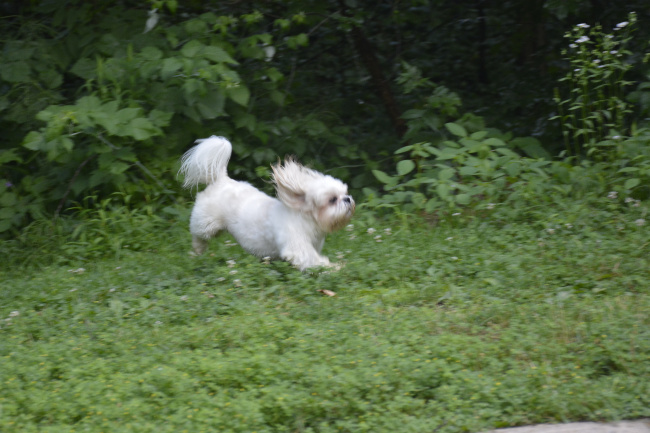
Study your dog's daily exercise patterns.
Obesity is a pandemic disease for pets in the United States. The number of obese pets keeps on increasing every year.
Our pets are becoming overweight because they are eating more and not getting enough exercise. Just as their sleep timings need to be monitored, similarly, the amount of time our pets exercise also needs to be regulated.
Overfeeding, coupled with not getting enough exercise, leads to an obese dog. Try to go for a walk to a park close to your home with your dog. The playground could be a place where you can go for a walk, you and your pet can have some fun playing.
If you want to get physical, take a Frisbee with you. You can throw the Frisbee around as your dog retrieves it to you. This will be good fun and exercise both for you and your pet.
Author Bio: (Dog Fitness)
Stella Lincoln owns a dog by the name of
“Ellie.” She is a single mom and a blogger at Academist Help, and Crowd Writer.
About Janice (author and voice behind this site)
Janice Jones has lived with dogs and cats for most of her life and worked as a veterinary technician for over a decade. She has also been a small-breed dog breeder and rescue advocate and holds academic training in psychology, biology, nursing, and mental health counseling. Her work focuses on helping dog owners make informed, responsible decisions rooted in experience, education, and compassion.
When not writing, reading, or researching dog-related topics, she likes to spend time with her six Shih Tzu dogs, her husband, and her family, as well as knitting and crocheting. She is also the voice behind Miracle Shih Tzu and Smart-Knit-Crocheting
Does This Article Deserve Your Thumbs Up?
We always appreciate your support and encouragement. Your thumbs up means so much to us. Please like this article.
If you find this page or any page on Small Dog Place Helpful, or useful in anyway, I'd love it if you would click the small heart found on the bottom right of each page.
You can also share or bookmark this page -- just click on the:

Free Monthly Newsletter
Sign Up for Our Free Newsletter and get our Free Gift to You.
my E-book, The Top 10 Mistakes People Make When Choosing a Dog (and how to avoid them)
